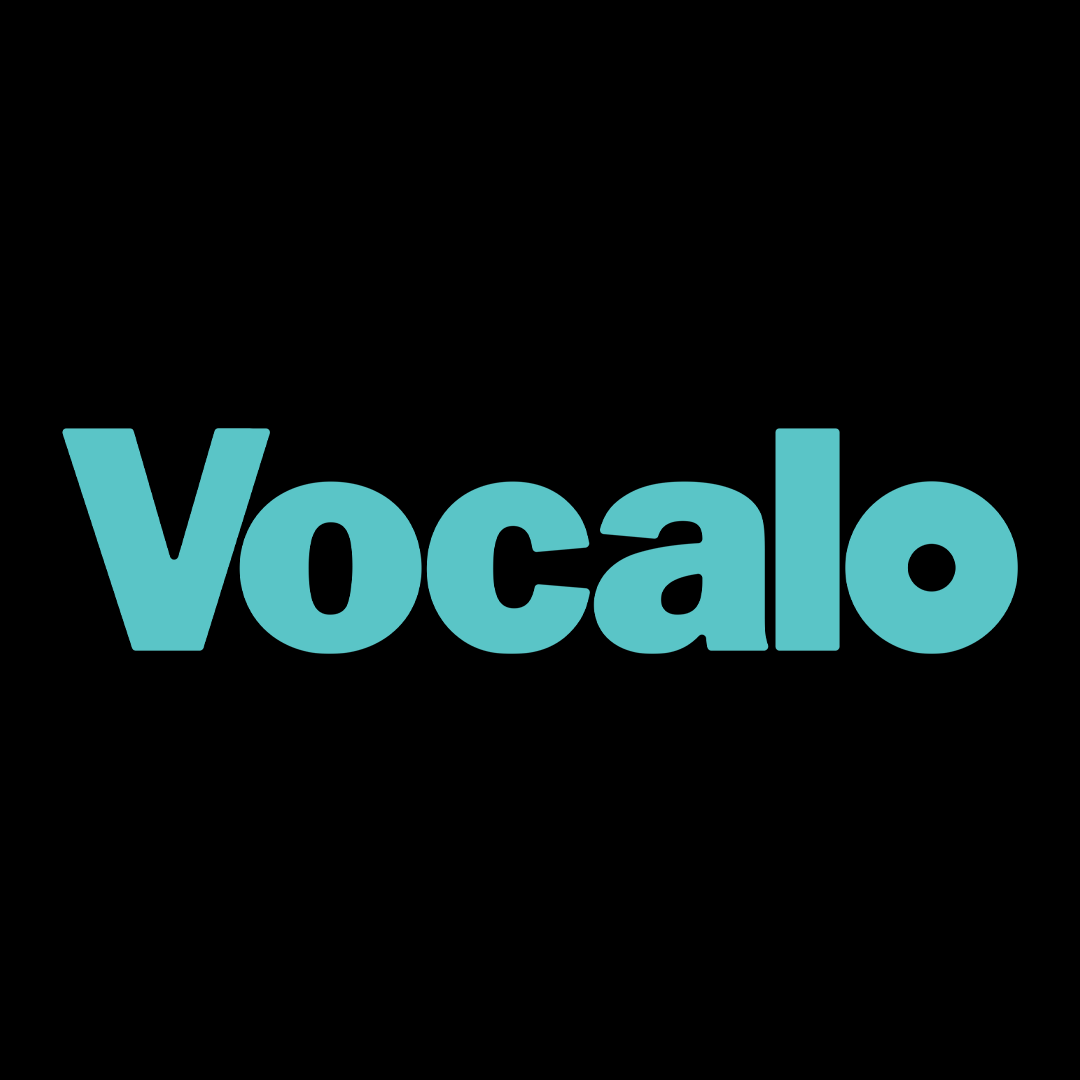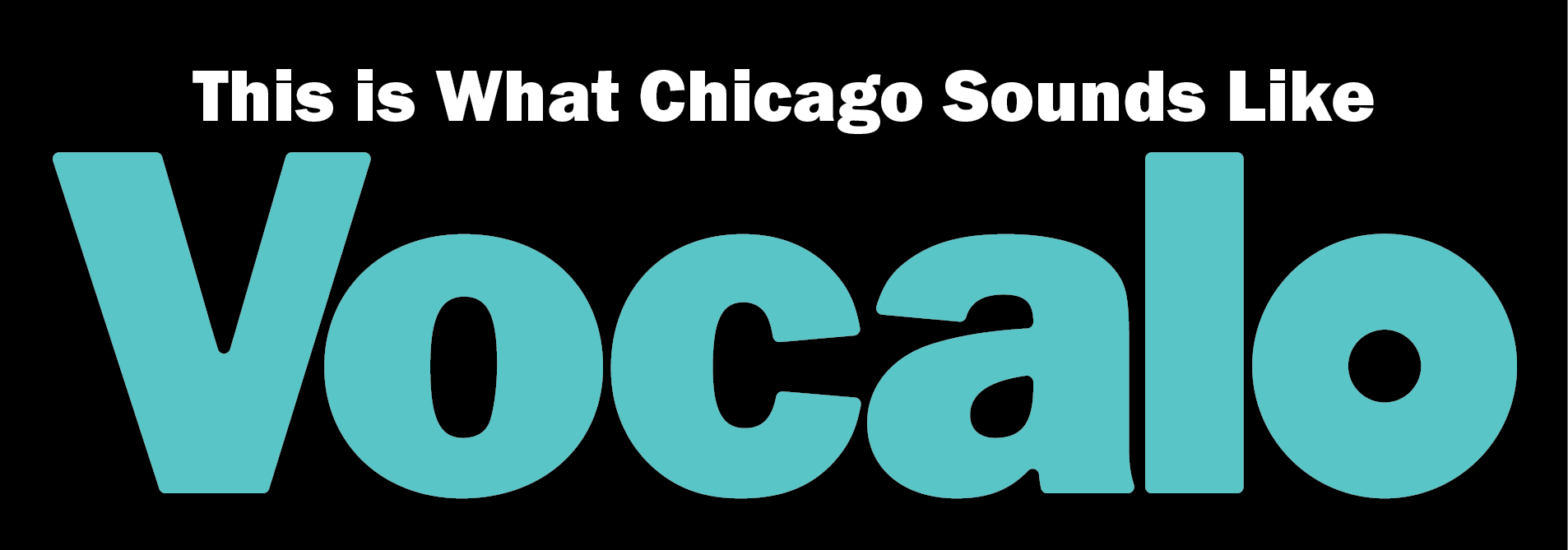For Glamhag, Art Is A Love Letter
Written by Vocalo Radio on March 1, 2024
Whether they’re throwing glitter in the air or acting out removing their own guts, Chicago multimedia artist, director and designer Glamhag puts playfulness at the center of their work.
Glamhag has been an artist for as long as they can remember. From a childhood of compulsively making art anywhere and everywhere they could to attending art school to pursuing a career, at the core of their passion is childlike playfulness.
“I don’t always know why I’m making something,” they said. “But then it becomes apparent once the ball starts rolling.”

Glamhag’s innate sense of youthful whimsy coincides with their love for performance art, which they discovered while attending art school. They dove headfirst into the performance art scene; they began dancing with Pure Magical Love, a group led by Chicago artist Heather Lynn, and performing in DIY shows. Their early DIY performances included drag, alternative comedy, sculptures, choreography and costumes, and would take place anywhere — from someone’s living room to onstage at the Metro. Through performance, Glamhag creates playful, often campy, moving works of art, while harboring respect for each fragment of the performance.
“Once [the costumes and props] had been used, they were either dirty or destroyed, or damaged in some way, and then they had this kind of charge and life to them, and history to them,” they explained.
When they’re not taking the stage for a performance, Glamhag also enjoys sitting behind the camera as a director. Their debut feature film was Holy Trinity, an experimental comedy-drama about a girl who “huffs a mysterious aerosol can and develops the ability to speak to the dead.” Premiering at Outfest in 2019, Holy Trinity was written, cast and filmed in less than a year and sparked the creation of their company Glamhag Productions.
“I think, once I transitioned to filmmaking, my practice just got exponentially more collaborative,” Glamhag said. “Chicago is this really vibrant place full of so much talent … there’s something about the people that live here who are just game to make stuff.”

Inspired by their early experiences in Chicago’s DIY arts scene, Glamhag hopes to further cultivate inclusive artistic community and inspire future generations of artists to pursue their passions.
“I do think that the most important thing, to me, just about living this life, is being able to be a part of a community,” they said. “I mean, I think that it’s the most important thing, period.”
For this segment of “This is What Chicago Sounds Like,” Glamhag discusses their lifelong thirst for creative expression, DIY art, production design and self-expression.
Where are you from?
I’m originally from London, England, I grew up there, and then I moved to LA when I was 13. Then I came to Chicago about 12 years ago. So, I’m from Chicago.
How did you get into making the art you do?
I’m one of those people that’s been sort of compulsively making art since I can remember. I used to draw all over my body as a little kid. I was always painting, drawing, and then it turned into going to school and then wanting it to become a career, but it always ends up kind of coming back to that place of play. And also this, almost, necessity and compulsion.

I think that my best work happens when I just follow the thread. I don’t always know why I’m making something, but then it becomes apparent once the ball starts rolling. I think I’ve always made work about identity and the performativity of, not just gender, but all of the different ways that we present ourselves to the world. I think [I’ve] just always been very fascinated with that, with putting on a costume and how that can transform you. I wouldn’t say that I’m necessarily an actor, because I really always feel like I’m myself, but I feel like I’m just trying on a different skin, in that sense. When I went to art school, I went very heavily in the video art performance and performance art direction. That kind of looked like all sorts of things. I think that I was very blessed to be in Chicago at this really phenomenal time, when there was a thriving DIY scene where you would just see all kinds of stuff. I was exposed to people doing grad school level performance art, and then I was also experiencing warehouse, messy, choreographed dance, glitter-flying-everywhere work. I got very involved in that scene, and I was dancing with a group called Pure Magical Love, which was run by this amazing artist, Heather Lynn.
I was also a part of a lot of other DIY art shows where I would do all kinds of things. A lot of that included drag. Another theme that seems to continually come up is me wanting to rip my own guts out. Motherhood and birth is another theme that comes up a lot. And also performing at different kinds of venues, being like, “Okay, we’re performing at Berlin nightclub,” or we’re performing in someone’s basement, we’re performing in someone’s living room, we’re performing at a house show, we’re performing onstage at the Metro. The performances would kind of morph depending on what that meant. Or we’re at an alternative comedy show. All of those things were different assignments to do performances that fit those bills. I also make costumes and sculptures, objects. The costumes and props that I was making, and objects, could exist as their own objects, but I found them more fascinating being activated in performances and videos. Once they had been used, they were either dirty or destroyed, or damaged in some way, and then they had this kind of charge and life to them, and history to them. And I found them much more interesting, post- being used in that way. I think I have released myself of fitting into any specific category of being a sculptor, or a painter or a performer. And just using everything in this all-encompassing way that I really try and just embody, even in my everyday life.

I remember being overwhelmed at school and learning about how much art had already been made, and feeling like there was no way I could possibly make anything unique. And kind of combating that by literally then just imitating art that I did like, because I was like, “I love this piece so much. I want to remake it and embody it,” and I’m not pretending that it was original. I am going to, for instance, dress up as Marilyn Monroe and redo my own version of Gentlemen Prefer Blondes or I’m going to do my own version of this video art piece by George Kuchar that I really love. And it’s inevitably going to turn into its own thing, because … I think it’s just being honest about that. And then it ends up turning into something different. And just looking at it as kind of like an homage and a love letter. And then, oftentimes, it would be so removed from the thing that I was looking at that it would be completely different. That’s also how everybody makes art! You talk about what people’s influences are, and it’s always like, “Oh, well I was inspired by this and this and this.” We’re all pulling from everything.

You made a feature-length film a few years ago. Tell us about it!
I finished school, and I was like, “I’m going to figure out how to make a feature film in a year. And if I don’t, then I’ll go back to school.” And I figured it out. So luckily, I didn’t have to go back to school! The feature film that I made is called Holy Trinity. It’s about a girl who huffs a mysterious aerosol can and develops the ability to speak to the dead. It premiered at Outfest in 2019, and it had a really successful festival run. I think, once I transitioned to filmmaking, my practice just got exponentially more collaborative. Chicago is this really vibrant place full of so much talent, and I also think, for many reasons, there’s something about the people that live here who are just game to make stuff.
I noticed “Glamhag” is also the name of your production company. Is that new?
Glamhag Productions has technically been since I made Holy Trinity. I’m kind of just trying to expand it and figure out what that means. I also have this ongoing project called “Glam Brand,” where it is a ubiquitous brand that’s kind of like a commentary on consumerism. None of these things actually exist, just, there are commercials for them. There’s Diet Glam, which is a soda, there’s GlamBar, there’s now “Glamhag Productions,” my name is “Glam.” It’s sort of leaning into this unfortunate realm that we’ve entered, where everything has to be branded, packaged and sold. Kind of poking fun at that a little bit, but also at the same time, making something that just is uniform and it is all-encompassing, which is something that I also try to do with my life and my art practice.



A look inside Glamhag’s studio, filled to the brim with overflowing shelves, cardboard stalagmites, giant mushrooms and a custom director’s chair. Ari Mejia | Vocalo Radio
I think I felt conflicted when I first did it, because I was like, “This is essentially an Amazon-esque brand that is the villain. But it’s also my name. It works as good branding that then promotes my work, but it’s also supposed to be a heavy critique on what social media has done to art. And it didn’t used to be that way.
This amazing, glorious DIY scene that I was talking about, of the past, I have high hopes that we could come back to something like that. But social media has really made things have to be hyper-curated and presented in this very clean way. Because currency is now attention. It’s like you have to, but it’s also tainting real expression. I do think that the most important thing, to me, just about living this life, is being able to be a part of a community. I mean, I think that it’s the most important thing, period. It’s a way for me to be doing things and engaging with a community that’s beyond just gathering and beyond just partying. Those things are great, too, but it’s … a way that I’ve been able to form very amazing, complex relationships with people and really build something.
I’m hoping that I can continue to build in a direction where I can get to a point where I can help people make their projects, too, which is sort of what I’m hoping the direction of my production company goes in. Sort of branch out and be making lots of projects and maybe help the baby Glams get started.

Since 2016, we have been profiling people who give their all to Chicago and enrich us socially and culturally by virtue of their artistry, social justice work and community-building. Take a listen. Read their words. Become inspired.

Interview and audio production by Ari Mejia
Written introduction by Abigail Harrison and Morgan Ciocca
Transcription and editing for length and clarity by Morgan Ciocca
Photos by Ari Mejia, edited by Blake Hall and Morgan Ciocca
More from Vocalo:
 Vocalo Radio
Vocalo Radio 











